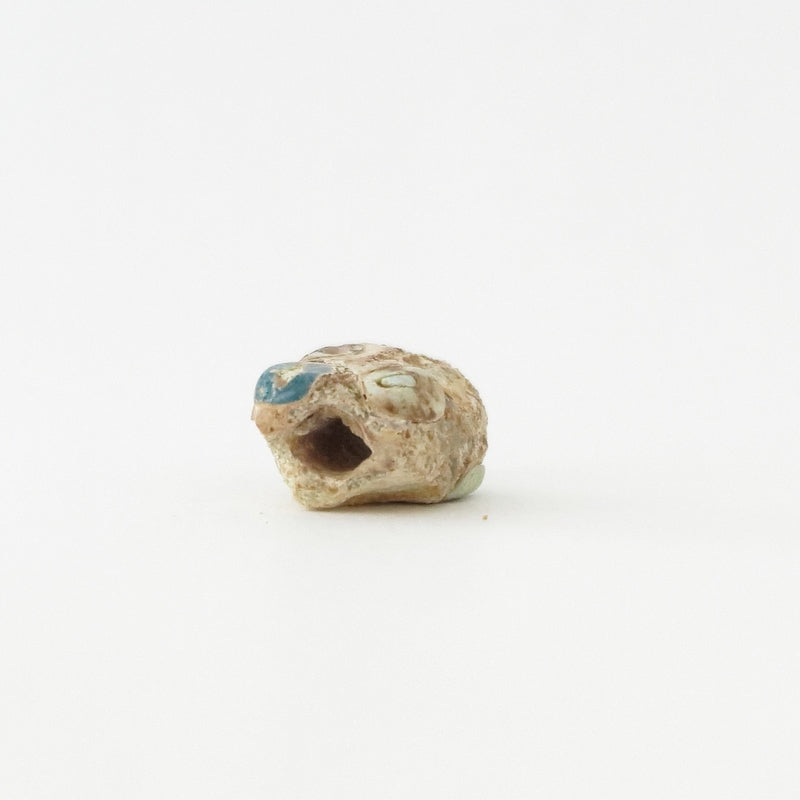MALAIKA
Ancient Chinese Eye Bead
Ancient Chinese Eye Bead
SKU:hn1116-142
Couldn't load pickup availability
Product Description: This ancient Chinese eye bead features a light blue eye motif on a faience base, estimated to have been crafted during the late Warring States period to the Han Dynasty. The bead shows significant weathering and some areas of damage, characteristic of its age.
Specifications:
- Origin: China
- Estimated Production Period: 3rd century BCE to 1st century CE
- Size: Approximately 13mm in diameter x 18mm in height
- Hole Size: Approximately 4mm
Special Notes:
Images may slightly differ from the actual product due to lighting conditions during photography. The product may appear different in various lighting environments. This is an antique piece and may exhibit scratches, cracks, or chips.
About Chinese Warring States Beads:
Warring States Beads: Beads made during the Warring States period (5th to 3rd centuries BCE) are known as "Warring States Beads." The earliest glass in China, dating back to the 11th to 8th centuries BCE, was discovered in Luoyang, Henan Province. However, the widespread production and use of glass products began during the Warring States period. Early Warring States beads typically featured faience bases with glass patterns, evolving later to fully glass beads. Common designs include "Seven Star Beads" and "Eye Beads," characterized by their dotted patterns. While the glass-making techniques and many design elements were influenced by Western Asia, the materials used in Chinese glass from this period differ significantly. This indicates the advanced glass manufacturing techniques in ancient China, evidenced by Warring States beads and other ancient Chinese glass artifacts. These beads not only hold historical value as the beginning of China's glass history but are also cherished for their rich designs and colors, making them popular among collectors.
Share





